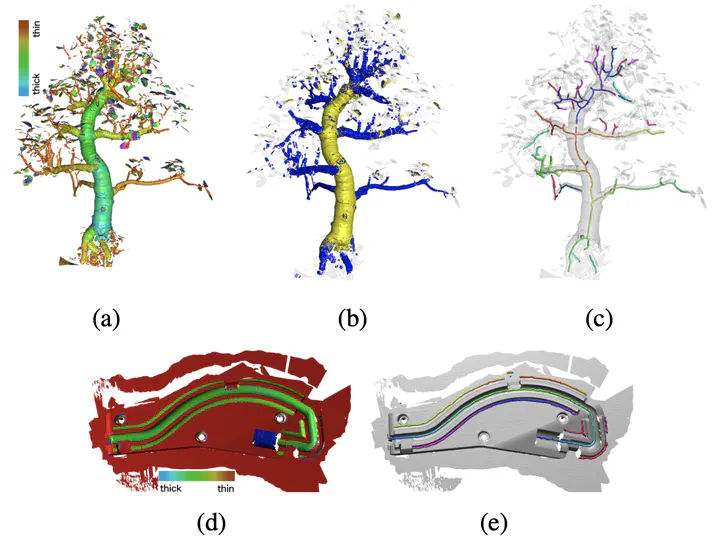Centerline detection on partial mesh scans by confidence vote in accumulation map
Jan 1, 2016·,, ·
0 min read
·
0 min read
Bertrand Kerautret
Adrien Krähenbühl
Isabelle Debled-Rennesson
Jacques-Olivier Lachaud

Abstract
This paper proposes an original method for extracting the centerline of 3D objects given only partial mesh scans as input data. Its principle relies on the construction of a normal vector accumulation map build by casting digital rays from input vertices. This map is then pruned according to a confidence voting rule: confidence in a point increases if this point has maximal votes along a ray. Points with high confidence accurately delineate the centerline of the object. The resulting centerline is robust enough to allow the reconstruction of the associated graph by a simple morphological processing of the confidence and a geodesic tracking. The overall process is unsupervised and only depends on a user-chosen maximal object radius. Experiments show a good behavior on standard mesh scans. Moreover, the proposed method is not only competitive with state-of-the-art methods on perfect data, but appears to be much more reliable on imperfect or damaged data, like holes, partial scans, noise, and scans from only one direction.
Type
Publication
Pattern Recognition (ICPR), 2016 23rd International Conference on, Proceedings, pp 1376–1381, 2016, IEEE.